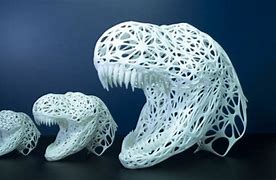**”Clash of the Carbides: Unmasking the Mighty Tungsten Titan”**
(Material Mix: Clarifying Carbide vs. Tungsten Carbide)
Picture this: two materials walk into a workshop. One’s a tough-as-nails contender with a reputation for durability. The other? Its flashy cousin, often mistaken for the same thing but packing a secret superpower. Welcome to the world of carbides, where confusion reigns and tungsten carbide emerges as the unsung hero of hardcore engineering. Let’s break down this dynamic duo—carbide vs. tungsten carbide—and see why they’re more like distant relatives than twins.
First off, let’s clear the air: “carbide” isn’t a single material. It’s a family reunion of compounds where carbon buddies up with metals like titanium, silicon, or boron. Think of carbide as the last name, and the metal as the first. Now, meet the rockstar of the clan: **tungsten carbide**. This stuff isn’t just another member—it’s the heavyweight champion, the material equivalent of a superhero cape.
So, what makes tungsten carbide so special? Imagine squeezing carbon and tungsten atoms into a molecular dance so tight, they form a structure harder than a diamond-coated anvil. Tungsten carbide is basically the Hulk of materials—nearly indestructible, laughably scratch-resistant, and built to outlast everything from drill bits to wedding rings. But here’s the kicker: not all carbides are created equal. Your everyday “carbide” tools? They might be made from other carbides, like titanium carbide, which are tough but bow down to tungsten’s brute strength.
Let’s talk real-world street cred. Tungsten carbide is the go-to for jobs that demand muscle. Ever seen a mining drill chew through solid rock? That’s tungsten carbide teeth at work. Jewelry that stays shiny after years of abuse? Yep, tungsten carbide rings are practically immune to scratches. Even your phone’s vibration motor might owe its precision to this wonder material. Meanwhile, generic carbides might show up in cutting tools or coatings, but they tap out when the going gets *really* rough.
But wait—why the name confusion? Blame it on marketing. Many products labeled “carbide” are actually tungsten carbide, but sellers drop the “tungsten” because it’s a mouthful. It’s like calling a Ferrari “a car.” Technically true, but you’re missing the turbocharged details. So, when shopping for tools or materials, that tiny “WC” symbol (short for tungsten carbide) is your cheat code for unlocking maximum durability.
Here’s the twist: tungsten carbide isn’t invincible. It’s brittle under extreme stress, shattering like ceramic if smashed with a hammer. That’s why it’s often mixed with a metal binder, like cobalt, to add flexibility. Think of it as giving the Hulk a yoga class—still strong, but less likely to snap. Other carbides, like silicon carbide, thrive in high-temperature scenarios (hello, spacecraft heat shields!), proving that every carbide has its niche.
So, why should you care? Whether you’re DIY-ing a backyard project or designing a Mars rover, picking the right material matters. Tungsten carbide is your ally when you need something to last decades, not days. But if you’re working with extreme heat or need something lighter, another carbide might steal the spotlight.
In the end, the carbide family is full of underdogs and overachievers. Tungsten carbide might hog the glory, but its cousins have their moments too. The key takeaway? Always read the fine print. That “carbide” blade could be a tungsten titan in disguise—or it might be the understudy. Know the difference, and you’ll never second-guess your material choices again.
(Material Mix: Clarifying Carbide vs. Tungsten Carbide)
So next time someone says “carbide,” ask: “Which one?” Because in the world of materials, details are the difference between “meh” and “marvelous.”
Inquiry us
if you want to want to know more, please feel free to contact us. (nanotrun@yahoo.com)




